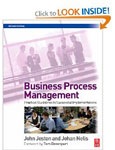 Enterprise customers and service providers can reduce costs and increase the time to market if they close the gap between IT and operations. Business Process Framework (eTOM) Version 8.0 is aimed at helping close that gap.
Enterprise customers and service providers can reduce costs and increase the time to market if they close the gap between IT and operations. Business Process Framework (eTOM) Version 8.0 is aimed at helping close that gap.
TM Forum announced today Release 8.0 of the Business Process Framework (eTOM). This landmark version incorporates the itSMF’s ITIL best practices to address the long-standing disconnect between IT and traditional communications operations environments. With the latest iteration of the Business Process Framework, service providers can build ITIL-compliant business models and customer front ends.
“Because ITIL is now embedded throughout the functional decompositions of the Business Process Framework, TM Forum can help service providers and their customers create a single, consistent process model for IT and operations,” says TM Forum President Martin Creaner. With this “common view,” ITIL best practices for service management are modeled as “policies” that enterprises can apply to their businesses.
Version 8.0 of the Business Process Framework incorporates key feedback from TM Forum’s “ITIL and eTOM—Building Bridges,” a report jointly written by TM Forum and itSMF. The document, also known as TR143, set the scene for a joint solution to the challenges involved in combining ITIL compliance with business needs.
Subject Matter Expert Mike Kelly further explains: “By capturing policies within the Enterprise Management area of the Business Process Framework—where corporate policies generally reside—enterprises can choose where in their business to apply ITIL best practice. This use of ITIL policies within enterprise management, simultaneous with the building of individual process flows in defined areas of operation, helps speed service delivery and improve efficiency.”
As version 8.0 is used over time to link policies with process flows, there will be clearer definition of how processes come together in specific business areas. “That will help enterprises target domain-specific challenges, such as those related to Change Management or Incident Management,” adds Kelly.
With increased visibility into domains, and processes related to those domains, service providers and enterprises can better define corporate direction and policy. “This will make the Business Process Framework and ITIL more appealing to an even broader set of companies, as most enterprises struggle to bring together IT and business views,” says Creaner.
Going forward, TM Forum and itSMF will continue to integrate artifacts, as well as explore underlying commonalities and gaps between the ITIL and Business Process Framework standards.
Extending Business Process Framework 8.0 for Revenue Management
In addition to ITIL integration, TM Forum’s Business Process Framework 8.0 also incorporates new revenue management process detail, enhancing the “Billing” area of the Business Process Framework. That area has now become the “Billing and Revenue Management” section of the framework, and it adds a new expanded definition of charging, and of the process definitions related to charging. These changes—based on a tight linkage of the Framework to TM Forum’s 2008 Revenue Map (formerly known as the GBA’s ‘Billing Map’)—are driven by the need to bill and charge not only for traditional services, but also for new multimedia offerings.
TM Forum’s Business Process Framework version 8.0 is now available to TM Forum Members.
About the TM Forum
With more than 700 member companies in 75 countries, the TM Forum is the world’s leading trade consortium focused on enabling digital services. Serving the information, communications and entertainment industries, the Forum provides leadership, strategic guidance and practical solutions to improve the way that services are created, delivered and charged. Members include the majority of the world’s service providers, network operators, software suppliers, equipment suppliers and systems integrators.
The TM Forum currently facilitates over 80 technical projects and provides extensive training, conferencing and information services to its members. Through its initiatives to help providers move to low cost, high quality ‘lean’ processes, the TM Forum helps its members automate business processes and work seamlessly across various parts of the service delivery chain. The organization provides industry benchmarks, guidebooks, process and software frameworks and downloadable software standards. These give service providers the direction and specific roadmaps to achieve much greater business efficiency and operational flexibility.
For further information regarding the TM Forum, related programs such as the Prosspero Program and TM Forum Management World conferences, please visit www.tmforum.org